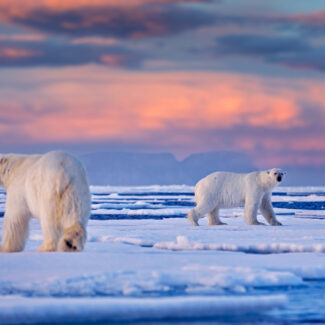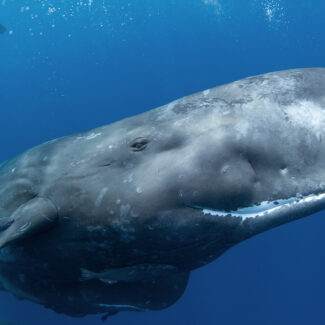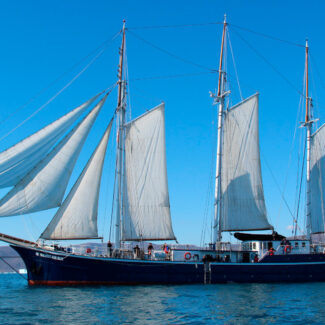9 Strange Scientific Discoveries In Antarctica Under The Ice
- 1. A Hidden Ecosystem in a Subsurface River
- 2. Subglacial Aquifers of Ancient Seawater
- 3. A Bygone Antarctic “Sea Monster”
- 4. Giant Egg Discovered in Antarctica
- 5. Glossopteris & the Terra Nova Expedition
- 6. A Vast Volcanic Province
- 7. An Epic Fish Nursery Below the Weddell Sea
- 8. Warm Subglacial Caves Under Antarctica
- 9. Burrowing Ghost Anemones Beneath The Ross Ice Shelf
By the standards of the modern world, Antarctica is as untouched as a landmass gets, and also as extreme, representing the globe’s grandest ice-cap realm. It’s also rather enormous—the fifth-biggest continent—and boasts a geologic record going back several billion years. That vastness of space and time, and that unique, near-pristine environment, translate to a singular scientific laboratory.
That said, the White Continent’s sheer harshness and remoteness—oh, and the fact that about 98 percent of its surface is locked under ice—makes “sciencing” here quite the challenge. Indeed, it wasn’t until the mid-2000s that scientists really started to peer below the ice at all. Since then some astonishing scientific discoveries in Antarctica have been made, and there’s no questioning the magnitude of those as yet hidden.
But what exactly has been found under the ice of Antarctica to date? Here’s a look at a few especially notable Antarctica discoveries—some of the most recent, the most consequential, the most profound, or the all-around oddest—listed in no particular order.
1. A Hidden Ecosystem in a Subsurface River
In December 2021, researchers who’d noticed an intriguing groove in the Larsen Ice Shelf off the eastern coast of the Antarctic Peninsula drilled down more than 1,600 feet to investigate what they correctly presumed was a subsurface river. They expected a water-filled conduit; they didn’t expect it to be brimming with life, namely in the form of darting-about amphipods.
Not only did the investigation reveal a deep-down ecosystem where it wasn’t anticipated, but it also showed unusual layering of alternating currents within the underground river—as yet unexplained. It also, serendipitously, happened to coincide with the epic eruption of Tonga’s Hunga Tonga-Hunga Ha’apai volcano on December 20th, the pressure waves of which were registered down in that impossibly remote sub-ice channel.
“Seeing the effects of the Tongan volcano, which erupted thousands of kilometers away, was quite remarkable,” Craig Stevens of New Zealand’s National Institute of Water and Atmospheric Research, part of the study team, said. “It is also a reminder about just how connected our whole planet is.”
Witness the incredible adaptability of life even in Antarctica’s harshest environments. This emperor penguin’s leap over a sub-surface river hints at the hidden, thriving ecosystems scientists are discovering beneath the continent’s icy facade.
2. Subglacial Aquifers of Ancient Seawater
Also in 2022, a team of scientists employing magnetotelluric imaging discovered an enormous aquifer of “fossil seawater”—probably sealed away by ice for millennia—beneath West Antarctica’s Whillans Ice Stream. The revelation of this deep reserve of brine confirmed what researchers had suspected for some time: that the porous sediment underlying Antarctica’s massive and thick ice bodies likely contains plenty of water.
The aquifer lies deeper down under the Whillans Ice Stream than already-identified subglacial lakes and rivers, and seems to show a very salty base layer overlain by freshwater. The scientists who imaged the aquifer speculate that it may (a) be linked to the shallower subglacial waterways and (b) help control the movement of the surficial ice stream.
The colossal ice formations of Antarctica hold more than just frozen water. Beneath their magnificent exteriors, scientists have discovered vast subglacial aquifers, containing ancient pockets of seawater, offering a glimpse into Earth’s past and potential for unique life forms.
3. A Bygone Antarctic “Sea Monster”
As dinosaurs (such as the great theropod Cryolophosaurus elliotti) stalked the Antarctic landmass, other Mesozoic reptilian beasts plied the adjoining waters. Among this marine menagerie was the heftiest known of the plesiosaur line, an elasmosaur, uncovered on the famously fossil-rich Seymour Island along the Antarctic Peninsula and described in 2019. This creature—which likely belonged to the Southern Hemisphere genus Aristonectes, known for more robust heads and shorter necks as compared with elasmosaurid relatives—may have reached close to 40 feet in length and weighed upwards of 15 tons.
This impressively complete fossil skeleton is also intriguing because of its vintage: The elasmosaur lived a mere 30,000 or so years before the devastating Cretaceous-Paleogene (K/Pg) Extinction Event that killed off non-avian dinosaurs and many other large animals and drew down the curtains on the Mesozoic Era. This hulking “sea monster” suggests a vibrant and diverse Antarctic marine ecosystem right up till the end.
With its extraordinarily long neck, the Elasmosaurus was a majestic “sea monster” that once glided through ancient oceans. Imagine discovering fossils of such a creature under Antarctica’s ice – a testament to a time when this now-frozen continent was home to an array of incredible marine life, continually surprising us with its hidden past.
4. Giant Egg Discovered in Antarctica
A bizarre, ovaloid fossil collected on the White Continent in 2011 by Chilean scientists sat as a mystery object for years before a University of Texas-led study in 2020 identified it as a huge, prehistoric soft-shell egg. Better than 11×7 inches, it’s the biggest soft-shell egg known and one of the heftiest eggs of any kind ever discovered.
The research team reckoned that whatever laid the egg—dated to about 68 million years old—was a marine reptile north of 20 feet, and proposed it may have been a mosasaur, the remains of which have been found in the same vicinity. Mosasaurs, which resembled oversized, paddle-tailed seagoing lizards, have generally been suspected of bearing live young, so the giant Antarctic egg has opened a whole new debate on the reproductive behavior of these long-ago predators.
This formidable mosasaur illustration evokes the awe-inspiring creatures that once roamed ancient oceans. Imagine finding evidence of such giants in Antarctica, perhaps in the form of a massive, leathery egg—a rare glimpse into the reproductive strategies of these immense marine predators and the vibrant past of the frozen continent.
Sources
Source: Dmitry Bogdanov, Public domain, via Wikimedia Commons
5. Glossopteris & the Terra Nova Expedition
Robert Falcon Scott’s 1910-1913 British Antarctic Expedition via the Terra Nova is best known as a tragedy: Scott and four comrades reaching the South Pole just shy of Roald Amundsen’s Norwegian team (who had become the first people to set foot at this remote extreme), and then dying on their arduous trek back to the expedition’s base on Ross Island.
But there’s a fascinating paleontologic/geologic dimension to the Terra Nova story, well told in The Antarctic Report podcast. When a rescue party discovered the corpses of Scott, Edward Adrian Wilson, and Henry Robinson Bowers on the Ross Ice Shelf in November 1912, they also found fossil specimens in the tent: samples the men had continued hauling despite their weakened condition and mortal struggle. Scott’s party had collected the fossils from a moraine along the Beardmore Glacier on February 8, 1912 as they journeyed back from the Pole. Among the rocks gathered, Scott noted “a piece of coal with beautifully traced leaves in layers, and some excellently preserved impressions of thick stems, showing cellular structure.”
In 1914, the Cambridge University botanist Albert Seward identified the plant fossils as belonging to the prehistoric genus Glossopteris, which had previously been found in India, Australia, South America, and southern Africa. Several hundred million years old, the Glossopteris fossils Scott and his men retrieved helped prove that Antarctic had once been connected with those other Southern Hemisphere landmasses in the supercontinent Gondwana. The find also helped Alfred Wegener formulate his groundbreaking theory of continental drift, which paved the way for our modern understanding of plate tectonics.
Robert Falcon Scott and his brave Terra Nova Expedition team faced unimaginable hardships in Antarctica. Their enduring spirit, and the scientific data they collected—including vital evidence like the Glossopteris fossils—continue to inspire researchers today as they uncover even stranger discoveries hidden deep beneath the ice.
Source: Henry Bowers (1883–1912), Public domain, via Wikimedia Commons
6. A Vast Volcanic Province
Stretching from the Antarctic Peninsula to the Ross Sea under the West Antarctic Ice Sheet lies one of the largest rift systems in the world. A 2017 project studying the buried terrain of this West Antarctic Rift System showed it’s also among the planet’s great volcanic provinces: The effort identified close to 140 subglacial volcanoes, some of them better than 12,000 feet in elevation. Some 91 of those ice-buried volcanoes had never been described before, demonstrating just how mysterious the White Continent—and not least what’s under the ice of Antarctica—remains.
7. An Epic Fish Nursery Below the Weddell Sea
In fact, it’s not just what is under Antarctica’s ice cap that remains little-known, but also the depths of its polar waters and sea ice. In early 2022, scientists announced the discovery of an absolutely enormous nursery of icefish on the seafloor of the Weddell Sea.
The astonishing find came aboard a German icebreaker investigating the depths of the Weddell, said to have the clearest waters on Earth. Video feed from a one-ton camera the ship towered blew the minds of onboard scientists when it began showing a staggering number of close-packed icefish nests, each guarded by a single adult.
While previously documented icefish colonies have numbered on the order of several dozen nests, this Weddell Sea nursery was estimated to contain some 60 million: an almost mind-boggling number. “We’ve never seen anything like this,” one of the onboard scientists, Autun Purser of the Alfred Wegener Institute, told Live Science.
The gigantic nursery was sharply demarcated, its edges corresponding—coincidentally or not, it’s yet unclear—with the extent of a comparatively warm upwelling of water.
The seemingly desolate beauty of the Weddell Sea holds a vibrant secret beneath its surface. Recent scientific discoveries have unveiled an epic fish nursery thriving in the hidden depths, reminding us that even in Antarctica’s frozen embrace, life finds astonishing ways to flourish and surprise us.
8. Warm Subglacial Caves Under Antarctica
Along with subglacial lakes, rivers, and aquifers, it turns out some intriguing caves lie hidden beneath the ice of Antarctica. A 2017 study led by the Australian National University and written up in Polar Biology identified a network of subglacial caves in the vicinity of Mount Erebus, an active volcano whose steam excavated the caverns. These steam-hollowed caves are warm—up to 25 degrees Celsius (77 degrees Fahrenheit)—and well illuminated by sunlight penetrating their entrances and through thin overlying ice.
Soil samples collected by the research team within the caves contained DNA from algae, mosses, and animal life. In a Phys.org article on the discovery, lead researcher Ceridwen Fraser said, “The results from this study give us a tantalizing glimpse of what might live beneath the ice in Antarctica—there might even be new species of animals and plants.”
And the researchers suspect that other subglacial cavern systems may exist in association with other Antarctic volcanoes.
This mesmerizing blue ice offers a glimpse into the hidden world beneath Antarctica’s frozen surface. Recent discoveries have unveiled warm subglacial caves, suggesting that pockets of heat and liquid water exist where we least expect them, potentially fostering unique and unexpected life forms in this otherwise extreme environment.
9. Burrowing Ghost Anemones Beneath The Ross Ice Shelf
In 2010-2011 as part of the ANDRILL (ANtarctic geologic DRILLing) program, an 850-foot deep, twelve-inch diameter bore hole was drilled five miles back from the front of the Ross Ice Shelf, and a cylindrical ROV (remotely operated vehicle) known as the Submersible Capable of under-Ice Navigation and Imaging (SCINI) deployed down it to provide visuals for the retrieval of a sediment core sample from the seafloor.
But once SCINI exited the bore hole, instead of surveying barren waters as expected, incredibly its camera revealed an unusual and likely unique marine biological community dominated by wispy, ghostlike anemones living upside-down inside burrows in the lower surface of the ice shelf itself. Subsequently named Edwardsiella andrillae after the program, they were the first reported species of sea anemone to live in ice.
In the scientific journal PLOS ONE, Frank Rack, executive director of ANDRILL, said:
“They had found a whole new ecosystem that no one had ever seen before. What started out as an engineering test of the remotely operated vehicle during its first deployment through a thick ice shelf turned into a significant and exciting biological discovery.”
Exactly how the animal lives or indeed thrives in such an unusual habitat is still a mystery, and the unexpected anemones weren’t the only discovery to be made by the ANDRILL program. A menagerie of bizarre creatures was caught on film, including upside-down swimming fish using the underside of the ice shelf like a sea floor, and an unidentified cylinder-shaped creature the scientists dubbed “the eggroll.”
The immense cliffs of the Ross Ice Shelf hide more than just frozen grandeur. Beneath this seemingly solid wall, scientists have made astounding discoveries, including unique “burrowing ghost anemones” thriving in the frigid darkness. These strange life forms remind us of the incredible biodiversity waiting to be uncovered in Antarctica’s sub-ice world.
Disclaimer
Our travel guides are for informational purposes only. While we aim to provide accurate and up-to-date information, Antarctica Cruises makes no representations as to the accuracy or completeness of any information in our guides or found by following any link on this site.
Antarctica Cruises cannot and will not accept responsibility for any omissions or inaccuracies, or for any consequences arising therefrom, including any losses, injuries, or damages resulting from the display or use of this information.










